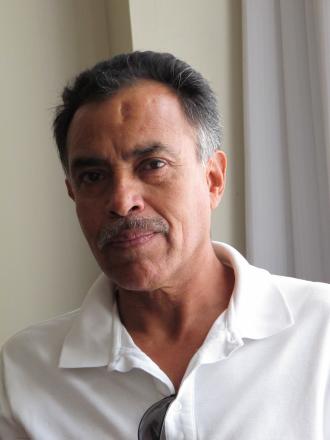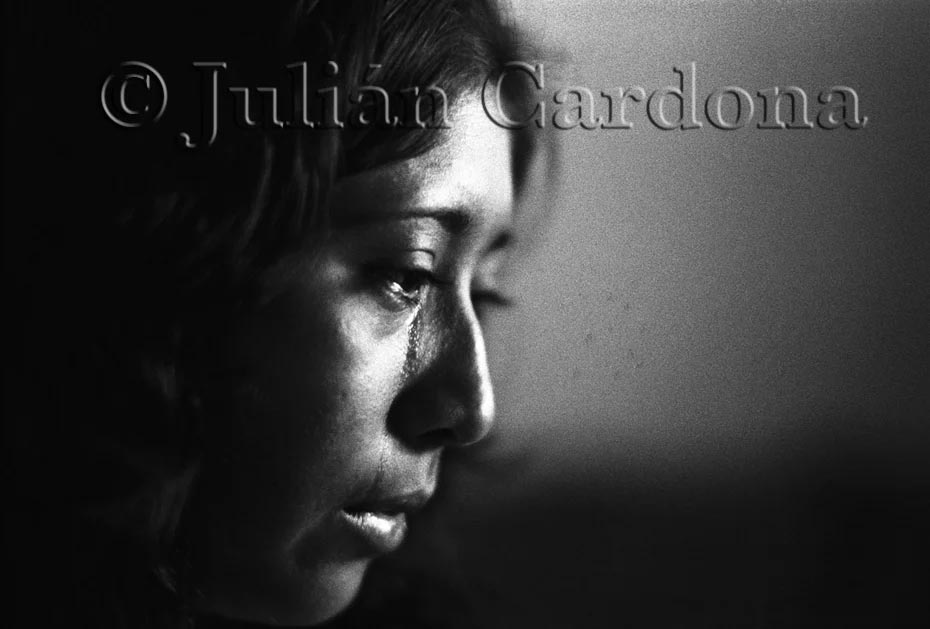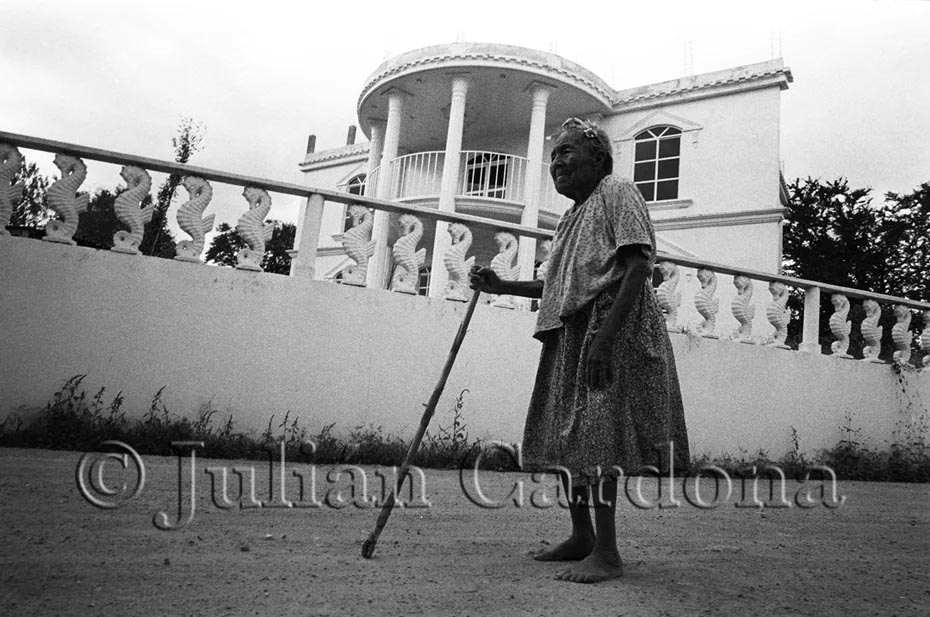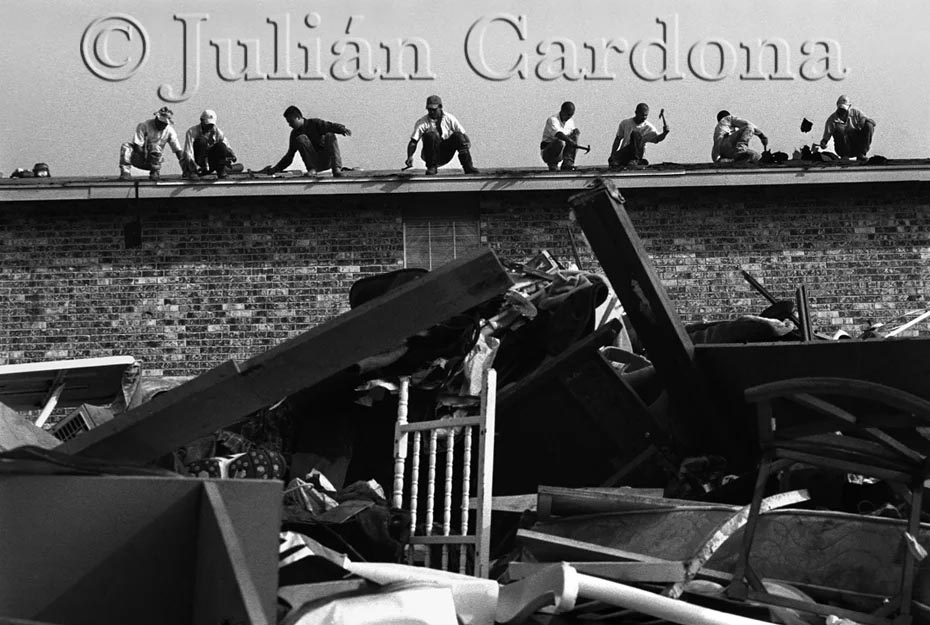Julián Cardona's Commitment to Journalism
By Kent Kirkton, founder of the Tom & Ethel Bradley Center
October 6, 2020—Julian was the epitome of a journalist. And we (Dr. Jose Luis Benavides and I) began to recognize this the first time that we met and interviewed him as the following conversation reveals
 KK: You don’t think, as a journalist, you put yourself in riskier situations than the average citizens would?
KK: You don’t think, as a journalist, you put yourself in riskier situations than the average citizens would?
Julian: I think journalism is, by definition, a risky profession. I used to think of me just as a journalist. Now the city is dangerous for everybody. If you do your job as a journalist it has always been difficult, going to war, going to dangerous places. That’s your job. You have to try to do it, try to do it well. I am not concerned about me. I am not the story.
KK: Chuck (Charles Bowden) reports in Murder City that the violence has become so capricious that it didn’t seem like you could take precautions any more that there were no longer any safe places in Juarez.
Julian. There is no safe place to go and the same thing can be said for many parts of Mexico. Juarez is, of course, the main place, the main dangerous place in the country. But I think you have to make a living and you have to stay in your city. You have to keep your friendships. And I feel happy to have a lot of friends. I think that is the part of my life that I have more friends during the most dangerous time in my city. I see many more people. I talk to more people.
KK: But Julian, you don’t have to stay in your city.
Julian: Why not.
KK: I am not saying you shouldn’t stay only that you don’t have to. You have made a commitment.
Julian: Yes. You make a commitment. But I am not the only one. There are many people who make a commitment. We may not have the answers but there are many people who have the same commitment. I have friends, reporters. I have activist friends who love the city.
 We have interviewed many journalists who evoked the same notions (goals, aspirations.) However, when we reflected on the fact that we were sitting in the middle of what was at the time, the most dangerous city in the world his words began to take on a deeper meaning which have been many times over by his published work and the people who knew him best.
We have interviewed many journalists who evoked the same notions (goals, aspirations.) However, when we reflected on the fact that we were sitting in the middle of what was at the time, the most dangerous city in the world his words began to take on a deeper meaning which have been many times over by his published work and the people who knew him best.
Julian first became known to us with the publication of “Juarez the laboratory of our future written by Charles Bowden with contributions by Noam Chomsky and Eduardo Galeano. It was published by Aperture books in1998. Julian was one of number of photographers that Bowden asked to participate in the publication, all of whom were colleagues of Julian’s. It was in addition to the prescient nature of the book, a significant moment because it led to a long association and collaborations between Julian and Bowden.
Their collaboration on “Juarez” was also the first strand in a web of friendships that eventually included Professor Molly Molloy, an author and research librarian, who maintains the Frontera List a huge repository of information about the border; Jose Galvan, known as El Pastor, who single handedly established and maintains an asylum for lost people on the outskirts of Juarez; and Alice Briggs, an artist/activist with whom Julian recently co-authored “Abecedario de Juarez,” an illustrated dictionary of a new language that has arisen in the violent streets of Juarez; as well as many and ongoing collaborations with Charles Bowden, journalist and author of approximately 30 books.
 t was through this group of friends that we were able to meet Carlos and Sandra Spector, who have been working for years in El Paso helping legally asylum seekers from Mexico escaping what Carlos defines as “authorized crime.” The Spectors generously gave us access to preserve the testimonies of a good number of asylum seekers. And in Juárez, Julián introduced us to Casa Amiga and its director at the time, Irma Casas, who helped us identify important stories and preserve a big part of their in-take records.
t was through this group of friends that we were able to meet Carlos and Sandra Spector, who have been working for years in El Paso helping legally asylum seekers from Mexico escaping what Carlos defines as “authorized crime.” The Spectors generously gave us access to preserve the testimonies of a good number of asylum seekers. And in Juárez, Julián introduced us to Casa Amiga and its director at the time, Irma Casas, who helped us identify important stories and preserve a big part of their in-take records.
(On a personal note: Jose Luis and I have been fortunate enough to spend a good deal of time with and among this group of people. Those hours have consistently been the most intellectually and emotionally stimulating one can image. It is no wonder that such exceptional work arose from their interactions.)
These long and fruitful friendships also attest to Julian’s early notion that, “You have to keep your friends.” He also stated that, If you do your job as journalist, “You have to try to do it, dry to do it well. You make a commitment.”
His commitment to doing his job well is on clear view in “Exodus/Exodo” in which he collaborated with Bowden. Julian had been investigating immigration from a Mexican for many years as a reporter in Juarez and he wanted to know about what happened when the immigrants arrived and settled in the U.S. He conceived of his self-assigned story title as “The New Americans.” When he and Chuck discussed the idea, Chuck’s idea was that people were fleeing Mexico.
Over the course of the project they worked at examining both sides of the same coin. For Julian, he followed immigrants from their home and along the torturous paths to Otro Lado. He went to their homes and work places to see how they lived once in the U.S. He thought of them as new Americans, especially the children that were born here as they took their places in the social and economic life of the country.
He and Chuck managed to produce an extraordinary book that balanced two approaches to a subject so well that one would never have imagined that they started from two different perspective. For the most part, they worked independently while also traveling together on occasion and collaborating at the end of the project. (They resolved and age-old problem of how wordsmith and a photographer can be free to follow their own instincts and end up with a synchronous literary effort setting the bar for those who follow.)
Finally, consistent with his recognition of the role of a journalist in today’s society and the fading notion that shining a light on a problem is going to lead to a solution, Julian donated his lifelong work in photography to the Tom and Ethel Bradley Center at California State University, Northridge in hopes that in the future that people who want to know what really happened on the border in these tumultuous times could be informed by his work which includes three oral histories completed in 2012.

